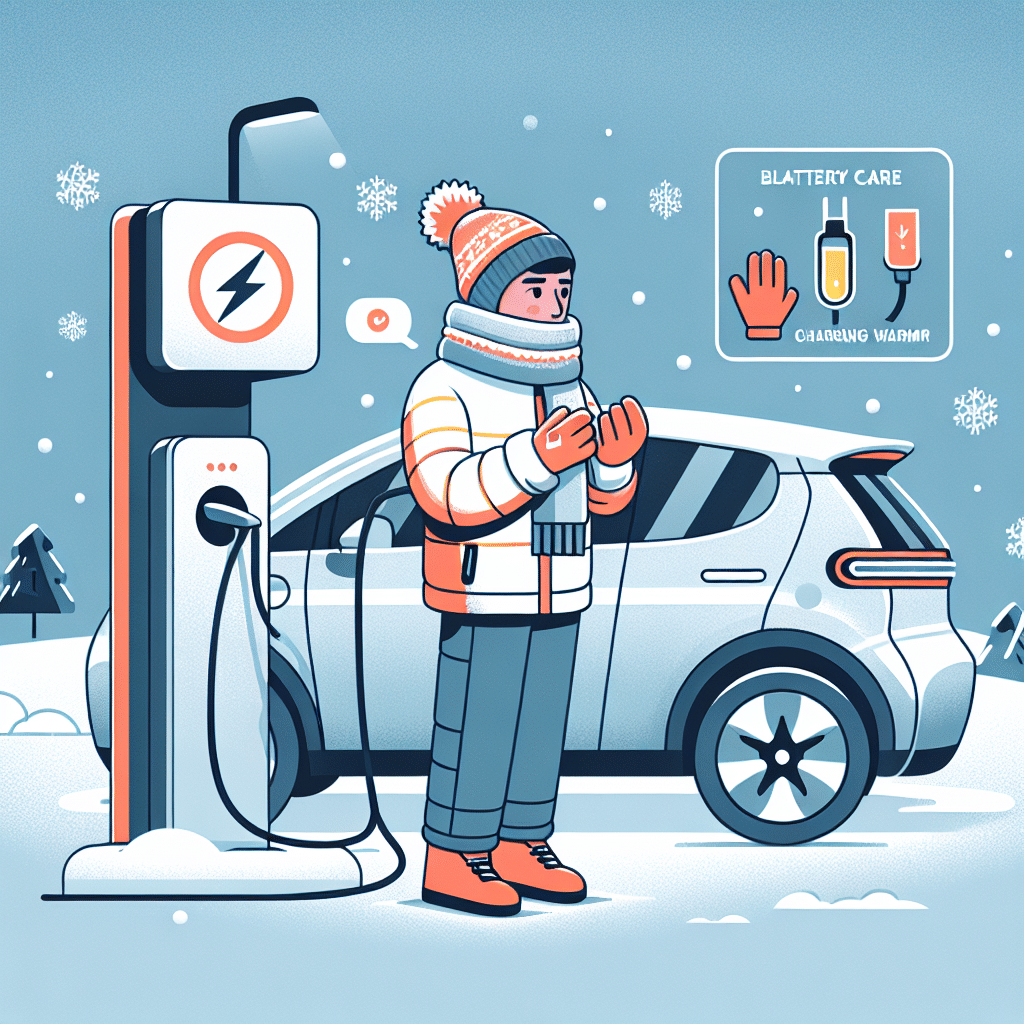Understanding Your EV Battery in Cold Weather
When winter hits, one of the main concerns for electric vehicle (EV) owners is battery performance. Cold temperatures can reduce the range of your EV significantly. To minimize the impact of winter on your vehicle’s battery, keep these points in mind:
-
Preconditioning the Battery: Many EVs come with a battery preconditioning feature, which warms the battery before you drive. Use this feature while the vehicle is still plugged in, as it can help maintain battery efficiency.
-
Utilize Regenerative Braking: Regenerative braking can help recharge the battery while driving. Although it’s often less effective in cold conditions, using it when possible can help extend the driving range.
-
Monitor Battery Temperature: Many EVs are equipped with battery temperature monitoring systems. Pay attention to the dashboard alerts to ensure your battery stays within the optimal temperature range.
Insulating and Protecting Your EV
Insulating your EV properly can make a huge difference during the harsh winter months.
-
Garage Storage: Whenever possible, park your vehicle in a garage to prevent it from becoming too cold. Even an unheated garage offers better protection than leaving it outdoors.
-
Use an EV Cover: If you must park outside, invest in a high-quality, weatherproof cover designed for EVs. This protects your vehicle from snow and ice accumulation, which can weigh down the wipers and damage seals.
Tire Maintenance in Winter
Maintaining your tires is crucial for optimal safety and efficiency.
-
Winter Tires: Make the switch to winter tires. They offer improved traction and handling on icy surfaces, which is essential for maintaining control during harsh winter driving conditions.
-
Tire Pressure Monitoring: Cold weather can lower tire pressure, leading to reduced efficiency and range. Check your tire pressure regularly, and inflate them to the recommended levels.
-
Tread Depth: Ensure that your tire tread depth is adequate; this is vital for driving safety. If they’re worn down, it’s time for a new set.
Charging Practices in Winter
Charging habits can also affect your EV’s performance during winter months.
-
Use DC Fast Charging: When possible, take advantage of DC fast charging stations. This can help quickly energize your battery, as the heat generated during rapid charging can also warm the battery.
-
Home Charging Station: Consider investing in a home charging station with a higher amperage to enable faster charging. This can be invaluable on colder days when your EV needs a boost due to range limitations.
-
Charge Frequency: To improve battery life, try to keep your EV charged between 20% and 80% in winter to avoid deep discharges and high charges, which can be detrimental in colder climates.
Maintain Efficient Heating
Heating the cabin of an EV can drain the battery rapidly in winter.
-
Steering Wheel and Seat Warmers: Instead of cranking up the heater, use the steering wheel and seat warmers. This method consumes less energy while still keeping you comfortable.
-
Preheat While Plugged In: If your EV allows for cabin preconditioning, use it while the car is still connected to the charger. This uses grid power instead of battery power and keeps your battery range intact.
-
Use Eco Driving Modes: Many EVs come equipped with eco-driving modes, which optimize energy consumption. Engage this feature during winter months when battery efficiency is crucial.
Keep Windows Clear and Clean
Clear visibility is especially important in winter.
-
Windshield Wipers: Replace your windshield wipers with winter-grade ones that can handle snow and ice. Regularly clear snow and ice from your windshield and windows to avoid reduced visibility.
-
Defrosters: Make sure your defroster system is functioning correctly. This helps prevent your windows from fogging up and ensures you can see properly while driving.
-
Anti-fog Solutions: Use anti-fog treatments on your inside windows to maintain clear visibility and reduce the need for excessive defrosting.
Stay Informed and Prepared
Being informed can help you handle any unexpected situations.
-
Winter Driving Knowledge: Understand the unique driving dynamics of your EV in winter. Since EVs offer instant torque, this can be tricky on icy roads. Take time to practice driving in these conditions in a safe environment.
-
Winter Emergency Kit: Assemble a winter emergency kit that includes essential tools, warm blankets, a flashlight, non-perishable food, and charging cables. This preparedness can be lifesaving if you get stranded.
-
Vehicle Notifications: Many EVs have mobile apps that provide real-time notifications about your vehicle’s status. Make sure to set notifications for charging status, tire pressure, and any alerts about the vehicle’s systems.
Seek Professional Help When Needed
If you encounter issues that you cannot resolve, seeking professional assistance is key.
-
Routine Check-Ups: Schedule routine check-ups with an EV-certified mechanic, especially before the onset of winter, to ensure that all systems are functioning well.
-
Battery Health Checks: Regularly check your battery health with a professional service. Many EVs come with warranties that may cover battery issues, but understanding your battery’s health will help you make informed decisions.
-
Software Updates: Stay up to date with any software updates that may improve the performance of your EV, especially those related to driving systems in colder weather.
Utilizing Technology to Your Advantage
Leverage technology to deal with winter driving effectively.
-
Navigation Systems: Use navigation systems that can help identify routes with less snow and better conditions. Avoiding dangerous roads is always a priority.
-
Traffic Alerts: Stay informed about road conditions and traffic updates. Mobile apps can give you real-time updates, helping you adjust your route when necessary.
-
Community Insights: Participate in online forums and local EV groups to share tips and learn about fellow EV drivers’ experiences with winter drives.
By implementing these comprehensive care strategies, electric vehicle owners can navigate the winter months with confidence, ensuring both safety and efficiency on the road. Keeping informed, prepared, and proactive about your EV’s needs in winter can lead to a more enjoyable driving experience throughout the season.
